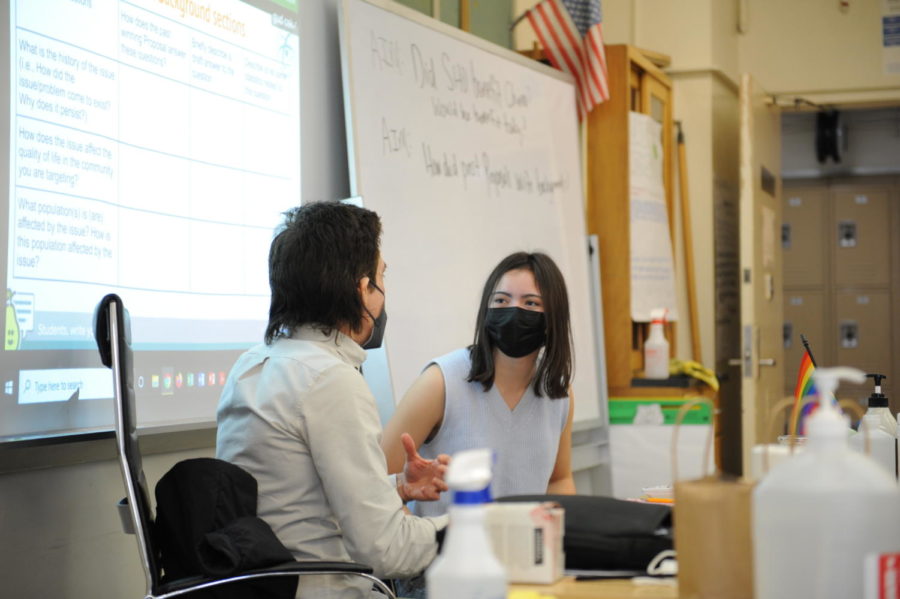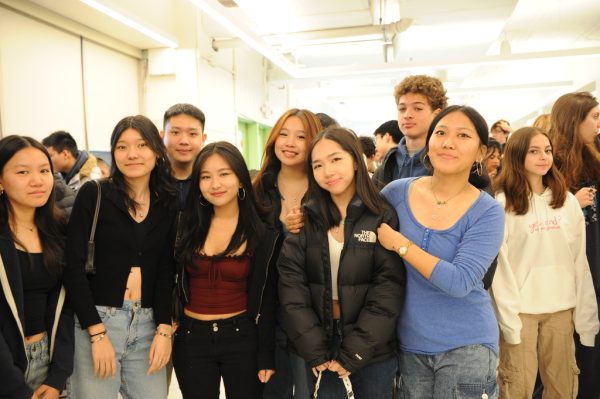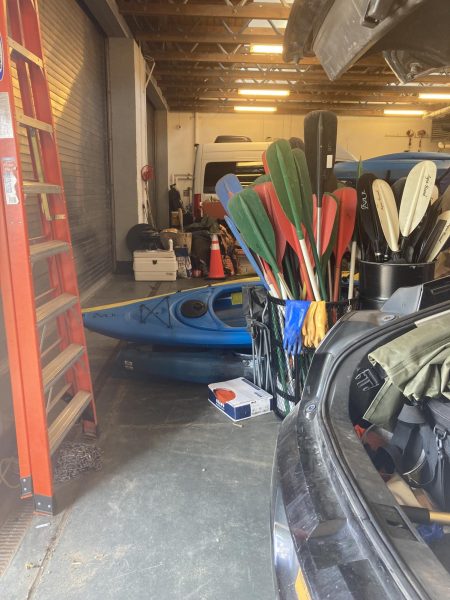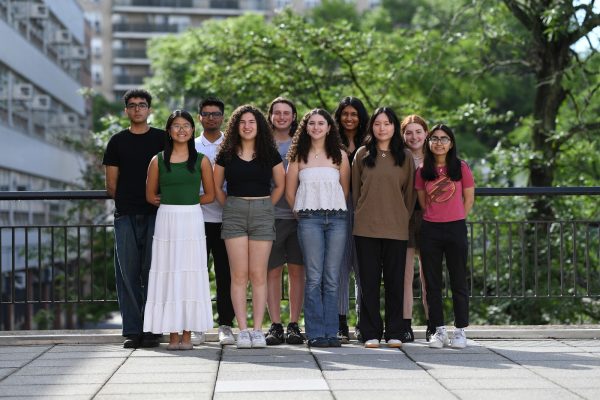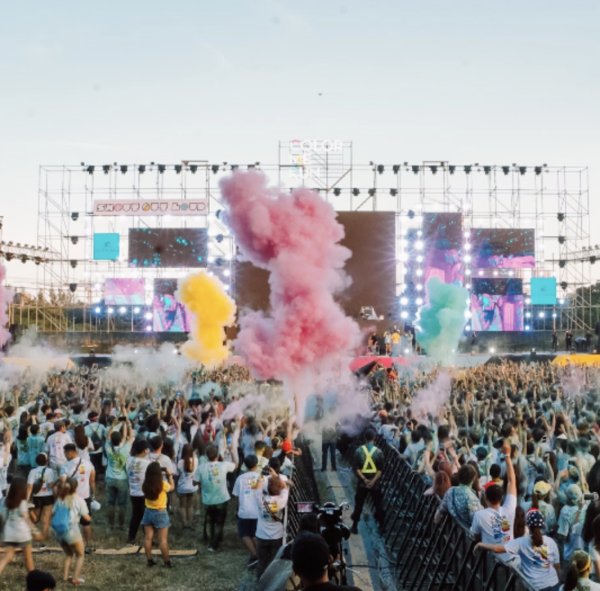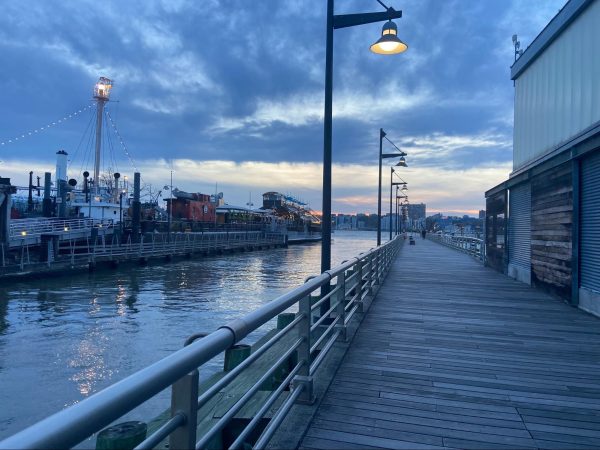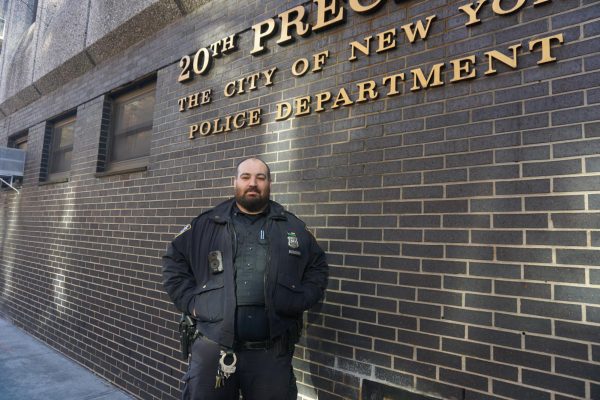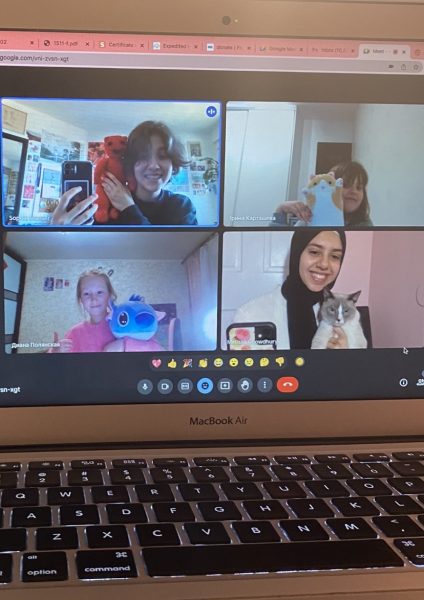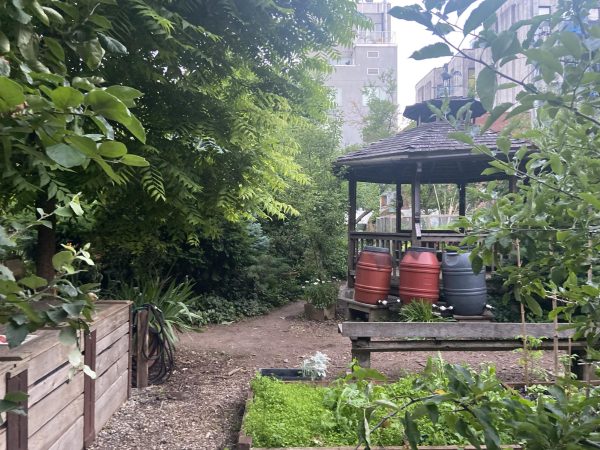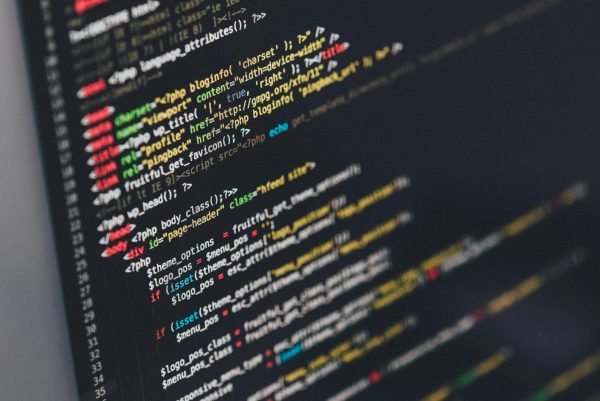Seniors Reflect Upon Their Regeneron Science Talent Search Submissions
The Class of 2022 discusses how they developed and conducted research throughout the Coronavirus pandemic.
Grace Lorch ’22 discusses her science research project with Dr. Savaiano.
Bronx Science seniors who participate in research classes submitted their final projects to the Regeneron Science Talent Search on November 10th, 2021. Students also submitted their projects to the Junior Science and Humanities Symposium and will enter the Terra New York City STEM fair in January 2022.
As with so many other aspects of our lives, the research process over the past three years was interrupted by the COVID-19 pandemic and lockdowns. For students looking to do hands-on lab research, their options became limited. “I was originally going to conduct robotics-related research in-person at New York University,” said Tobias Alam ’22, a student in the math research class. “However, this was stopped short by the COVID-19 pandemic, which prevented me from being able to travel onto their campus.”
The process of creating a research project and submitting it to the Regeneron competition starts in junior year. The Bronx Science research program produces a diverse range of projects, and the initial idea for a project can come from a variety of places. Some students, like Alam, read articles and conduct research on the internet in search of ideas they wanted to explore. He developed a project questioning if it is possible to “systematically generate research projects likely to lead to groundbreaking scientific breakthroughs.”
“I created an AI that uses natural language processing and graph theory in order to generate research questions likely to lead to groundbreaking scientific breakthroughs when investigated,” Alam said. “In other words, it is an AI that generates research projects.”
Other students, like Iskander Khan ’22 in the social science research program, took inspiration from past submissions to the Regeneron competition from Bronx Science students.
Khan’s project focused on using machine learning, specifically neural networks, in order to assess political biases in news articles. “I got the idea after reading about past Bronx Science Regeneron research concerning language on Twitter,” Khan said, “and having a prior interest in machine learning.”
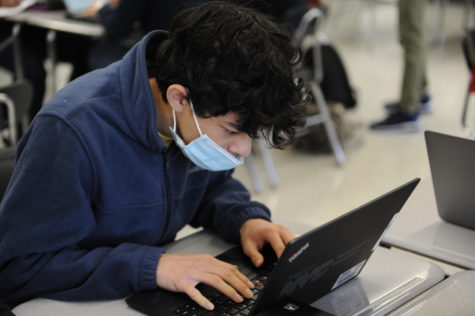
Grace Lorch ’22, also in the social science research program, got the idea for her project from current events. “During the revitalization of the Black Lives Matter movement in May 2020,” she said, “I noticed that a lot of companies were taking stands to support the movement, which angered many conservative buyers, who claimed that they would boycott the supporting brands.”
Lorch’s project explored how consumers’ political identities affect their behavior. “I wanted to explore political consumerism, how a person’s political beliefs influence their decision to boycott a company based on the company’s political initiatives,” she said.
Sahil Hosalli ’22, in the math research program, chose his project based on a specific end goal — to better understand the genetic similarities and differences between humans and chicks. Hosalli used preexisting data and machine learning to compare retinal cells in the two species. He hoped his project could help researchers “better understand which specific cells that genetic therapies and implants can target in order to restore vision that was impaired by damaged retinal cells.”
After deciding on a project idea, the next step is finding a ‘research mentor.’ Mentors are experts in whichever field the student is pursuing research in, and are there to help provide resources and advice for the student’s project.
“I consider myself lucky in terms of finding a mentor,” said Lorch. “I sent out a total of four mentorship requests, and received two back, but only one showed deep interest in working with me. He is a professor at the George Washington University business school, and he has done a great job at directing me with my ideas.”
Hosalli had a similar experience. “The process of finding a mentor was quite easy,” he said. “After identifying the field of research I was most interested in, I emailed various labs around the New York City area and found a research group at the City College of New York that was willing to mentor me. My mentor and the lab as a whole were extremely helpful.”
Others were not so lucky. “The process of finding a mentor was pretty tedious,” said Alam. “I sent 4-5 emails a week to different professors from November to January, until one finally responded. But my mentor turned out to be really helpful, providing tons of resources and even a training project and access to NYU’s supercomputer.”
Some students, however, do not end up finding an outside mentor at all. Khan was one of those students. He ended up with Dr. Savaiano, his teacher for social science research, as his mentor.
Once students have an idea and (hopefully) find a mentor, they must actually conduct their research. In the age of COVID-19, that usually looks like taking existing data and finding new ways to organize or analyze it, as well as creating a model of some sort to predict future trends. But this kind of research can often yield results that are as, if not more, meaningful to their fields as traditional lab-based research.
For example, Lorch’s project yielded results that were in some ways expected and in other ways unexpected. “The results aligned with prior research in the field,” she explained, “which was that liberals would boycott or ‘buycott’ brands at higher rates than conservatives, and that liberals would have a greater reaction to a company’s political advocacy than conservatives. What I didn’t expect is that person’s political preferences did not affect how authentic they perceived a company’s actions. There was no significant association between political identity and perceived authenticity. To elaborate, people did not view companies with opposing views to them as ‘ingenuine.’”
Khan felt that his project resulted in a useful new way of evaluating news articles. “My model achieved 95% accuracy in determining the bias of a news article. There were a lot of iterations done to improve the model throughout the process,” he said. “I think my model will allow researchers, students, agencies, and journalists to examine writing for bias on a deeper, more subtle level by using a neural network to examine the actual word choice and language patterns in texts. And, it shows that machine learning can indeed be useful in examining bias in text.”
Hosalli expressed excitement in being able to “identify a number of genes previously unknown to be expressed in developing photoreceptors. These genes could be further explored through wet-lab techniques and, from there, could be incorporated into the development of genetic therapies and bioelectronic devices.”
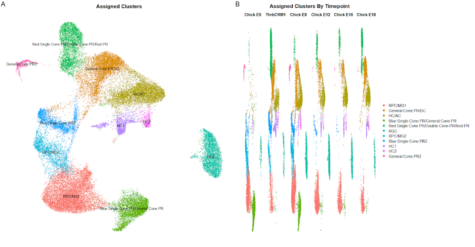
“My results,” he said, “greatly broadened my understanding of retinal development and developmental neuroscience as a whole, both because the process of research required me to conduct an extensive literature review and because the specific results of my project addressed a deficiency in this literature.”
Once the research has been done and conclusions drawn, the process of filling out applications to the various competitions begins. Regeneron is the most involved and has the earliest due date; this 2021-2022 academic year, it was November 10th, 2021. Alam felt that the Regeneron application was “the most stressful” out of the three that most students complete (the others being JSHS and Terra NYC), “as it essentially asks for many of the same qualities that college applications do.”
Finally submitting your paper to each competition is often a very relieving experience, due to how long and labor-intense the process is. Looking back, some of the students had advice for underclassmen looking to get involved in the storied Bronx Science research program:
“I would say to start identifying which field of research interests you the most the summer before your sophomore year,” said Hosalli. “You can do this by looking at the projects of previous Regeneron STS Scholars or by simply reading through science journals.”
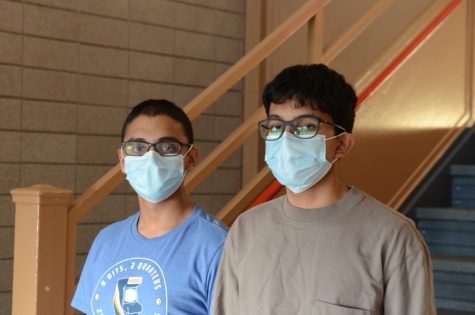
“Focus on creating your own unique contribution to the research field that you are interested in,” said Alam, “rather than just being your mentor’s lab assistant.”
“Make sure that you really use the summer before senior year to work on your project, because the year becomes very hectic once school starts,” said Khan. “It’s also helpful to just have your research done by then, so that all that you have to do in the fall is to write up your paper.”
“My advice to ninth graders is to take your time when thinking of the research topic you want to pursue,” said Lorch. “You will end up considering many ideas in your brainstorming phase, but just because something came to mind first, doesn’t mean there aren’t other subjects out there that would fit your interests better. You will know you have the right topic when the research doesn’t seem like a chore and genuinely engages you.”
On January 6th, 2022, Regeneron announced that 10 Bronx Science seniors were named Regeneron Science Talent Search 2022 Scholars: Aliya Fisher, Richard Gu, Samuel Iskhakov, Enrique Labre, Kathryn Le, Genevieve Morange, Samuel Rossberg, Arnav Shah, Eiki Shido, and Jay Vogel, all Class of 2022 seniors. This is the second year in a row that Bronx Science has had the most scholars out of any school in the competition.
Benjamin Fishbein is a Copy Chief for ‘The Science Survey.' He believes that a diverse range of ideas within journalism is important as it fosters thoughtful...
Alexandra Zwiebel is a Copy Chief for 'The Science Survey.' She finds journalistic writing to be fascinating because it is informative, yet also engaging...

